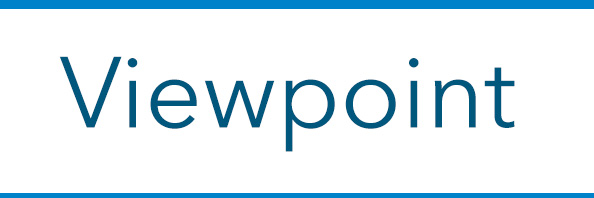Have you noticed an increase in higher education administrative positions focused on innovation and strategy? In the past few years, there has been significant job growth in these types of roles in higher education — especially at community colleges where the emphasis on self-sustaining, revenue-generating, entrepreneurial strategies has become more in-demand to lead transformative institutional innovation. Current job sites average more than 150 of these positions open across the country.

Skeptics might believe that roles like these represent administrative bloat in higher education. Yet, in my experience, they often signal a strategic investment in entrepreneurial leadership. And embracing and leading innovative initiatives within your institution can benefit your community college and can also position smart, ambitious administrators for further career advancement.
It’s not enough to have big ideas about how we can improve higher education; you have to build a thoughtful track record of innovation, outcomes and impact that only comes with practical application of your learning. You have to become an entrepreneur within your organization — an “intrapreneur,” who is courageous enough to apply new ideas in practical application, fail and learn fast, and co-create a future vision.
10 tips to get in the mindset
For more than 25 years in public and private universities and community colleges, I have created a body of work and designed a career trajectory wherein I have had the opportunity to found and launch nearly a dozen new roles, functions, departments and organizational structures that have sustained beyond my tenure. Here are some of my tips to have a meaningful impact within your organization by applying an entrepreneurial mindset:
- Become a voracious learner and lead with your learning. Study emerging signals and trends in other industries, and also learn everything you can about how your institution functions. Understand the key business processes within your department, your division and your institution, and identify areas for continuous improvement. Follow thought leaders for motivation and inspiration and join organizations like the Alliance for Innovation and Transformation (AFIT) to provide invaluable resources, insights and connections across sectors. Engage with professional organizations and associations, accrediting bodies, mentors and communities of practice where you can surround yourself with other practitioners. Leveraging these networks can also help you forge partnerships that enhance your initiatives.
- Understand the big picture to grow your emotional intelligence. Step outside your institution and think about the bigger context of the higher education landscape through a social, political, technological, environmental and economic lens. Identify the key stakeholders, seek executive sponsorship for your big ideas, and learn from your competition. See your organization as a system and then an ecosystem.
- Raise your hand and take action. Volunteer your ideas for continuous improvement and be willing to take the risk and extra workload involved to try something new to determine whether it works out or not. Serve on cross-functional teams and committees to understand the big picture of how higher education institutions operate.
- Be curious and inclusive to co-create a shared vision for the future of your community college. Approach your work like a scientist, seeking to understand where low effort may have high impact, and like an artist, where a slight nuance in your approach will be recognized and appreciated by an expert. Seek the voice of the front-line personnel, the student, the customer, in truly understanding and identifying the levers for meaningful change. Use your curiosity to motivate your creative thinking about what might be. Engage a critical mass of people who share the same vision.
- Define what success looks like and measure your efforts. Articulate a shared vision and use both data and storytelling to convey what success looks for your educational institution. Plan to collect data as part of your implementation.
- Implement ideas as products and proofs of concept. Put the work under a microscope and practice effective planning, project management, financial management and change management. Document your experience and learning.
- Communicate your outcomes and impact. Demonstrate high integrity and transparency by sharing outcomes of your proof of concept. Great outcomes should be celebrated and poor outcomes should motivate us to push further toward solving the problem. Lead change through thoughtful and strategic internal and external change management.
- Develop relationships of integrity and manage your brand. Cultivate strong interpersonal relationships of mentors, supporters, peers and those who challenge your work. Showcase a portfolio of your work through publications, photos and social media, and grow your online presence thoughtfully.
- Iterate and then iterate. You have to be okay to make mistakes publicly and also to learn from them. I appreciate Vince Lombardi’s saying that if you’re not making mistakes, you’re actually not trying hard enough to push the boundaries of your own professional growth and expertise.
- Focus on the long-term. Each project or initiative, win or lose, is a stepping stone to long-term success. Build a team around you that can challenge you to perform at your very best.
Document your ROI
Finally, it should be said that any leader over strategy or innovation must continuously demonstrate their added value to the organization and would be wise to document the ROI of the position itself. To ensure the role actually adds value, you can demonstrate evidence of concrete revenue generation, process improvements and qualitative outcomes. I regularly compare my salary to my outputs, such as revenue generation and philanthropic partnerships. Roles like these are charged to increase institutional capacity to continuously improve using competitive intelligence, to become true learning organizations that facilitate a culture of inclusion and innovativeness.
When you can speak to the bottom line of an organization, you can create a career that can evolve out of entrepreneurial approaches to higher education. You must demonstrate a propensity towards action and build a track record of outcomes. Then use this success as a data point for continuous improvement and career advancement.
Don’t play it safe now, when higher education needs authentic leaders more than ever to maintain relevancy in a shifting economy and political landscape. Don’t let yourself make decisions out of fear. A title alone will never lead to innovation within an organization, yet reframing your role (whatever level it may be) and your mindset as an active learner, leader and change agent will drive meaningful outcomes and cultural change at your community college.





